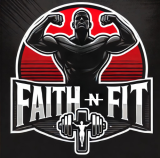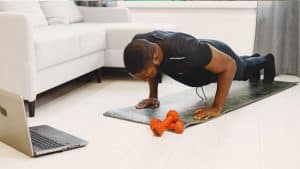Functional strength refers to strength that improves your ability to perform everyday tasks and athletic movements. To successfully build functional strength, unlike isolated gym exercises, functional training emphasizes multi-joint movements, stability, coordination, and control. Pull-ups and push-ups are cornerstone exercises that enhance upper body and core strength in a natural, efficient, and scalable way.
Phase 1: Mastering Technique & Building Base Strength
✅ Push-Up Progressions
- Wall Push-Ups → Incline Push-Ups → Knee Push-Ups → Full Push-Ups
- Focus: Maintain a neutral spine, engage the core, and lower the chest (not the hips) toward the floor. Mastering this technique is crucial as you build functional strength.
- Tempo: Start with controlled 2–1–2 tempo (down-hold-up) to build stability.
✅ Pull-Up Progressions
- Dead Hangs: Grip strength and shoulder stabilization; essential for building functional strength.
- Scapular Pull-Ups: Activate lats and scapular muscles.
- Assisted Pull-Ups: Use bands or machines.
- Negative Pull-Ups: Jump to the top, lower slowly (3–5 sec).
Phase 2: Strength Foundation via Accessory Lifts
To build functional strength, target supporting muscles:
- Push Exercises:
- Dumbbell Bench Press (horizontal push)
- Overhead Press (vertical push)
- Triceps Dips
- Pull Exercises:
- Barbell/Dumbbell Rows
- Lat Pulldowns
- Face Pulls (rear delts & traps) to enhance functional strength.
- Core (Stabilization):
- Planks & Side Planks
- Hollow Body Holds
- Hanging Knee Raises
Phase 3: Functional Integration & Volume Progression
- Grease the Groove Method (for push-ups & pull-ups): Do multiple sub-maximal sets throughout the day (e.g., 3–5 reps per set, several times daily).
- Super-Set Training: Pair push with pull exercises (e.g., Push-Ups + Rows) to maximize time and muscular balance. This helps build strength efficiently.
- Eccentric Overload: Perform slow negatives to increase time-under-tension and muscle fiber recruitment.
Recovery, Mobility & Support
- Shoulder mobility drills: Banded dislocates, wall slides.
- Thoracic spine mobility: Foam rolling & cat-cow drills.
- Avoid overuse: Keep volume sensible and progress gradually to help prevent injuries and maintain functional strength.
- Nutrition and sleep: Crucial for muscle repair and CNS recovery.
Weekly Functional Strength Sample Split
Day 1 – Push Focus
- Incline Push-Ups – 4 sets | 8–12 reps | RPE 7
- Overhead Dumbbell Press – 3 sets | 6–8 reps
- Side Planks – 3 sets | 30 seconds per side to improve functional strength.
Day 2 – Pull Focus
- Assisted Pull-Ups – 4 sets | 5–8 reps | RPE 8
- One-Arm Dumbbell Rows – 3 sets | 10 reps
- Hanging Knee Raises – 3 sets | 12 reps
Day 3 – Mixed Functional Conditioning
- Push-Ups – 3 sets | max reps -2
- Inverted Rows – 3 sets | 8–10 reps
- Farmer’s Carries – 4 rounds | 30 meters
- Core Superset: Hollow Holds + Bird-Dogs to aid in building functional strength.
Final Thoughts
Building strength in push-ups and pull-ups isn’t about flashy variations—it’s about consistency, intelligent progression, and respecting foundational movement quality. By mastering your bodyweight and increasing your functional control, you’ll unlock a level of strength that translates directly into athletic performance and everyday resilience.
Subscribe now and get a 14-day free trial workout app for iPhone users.





